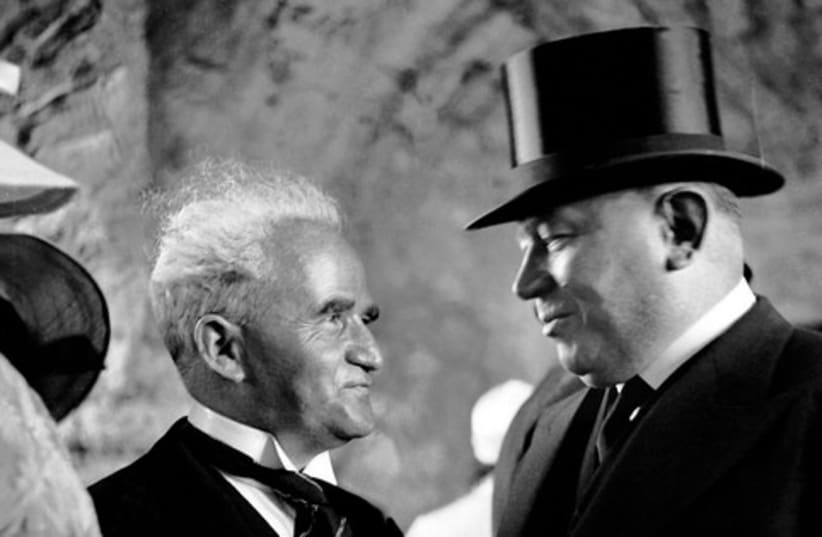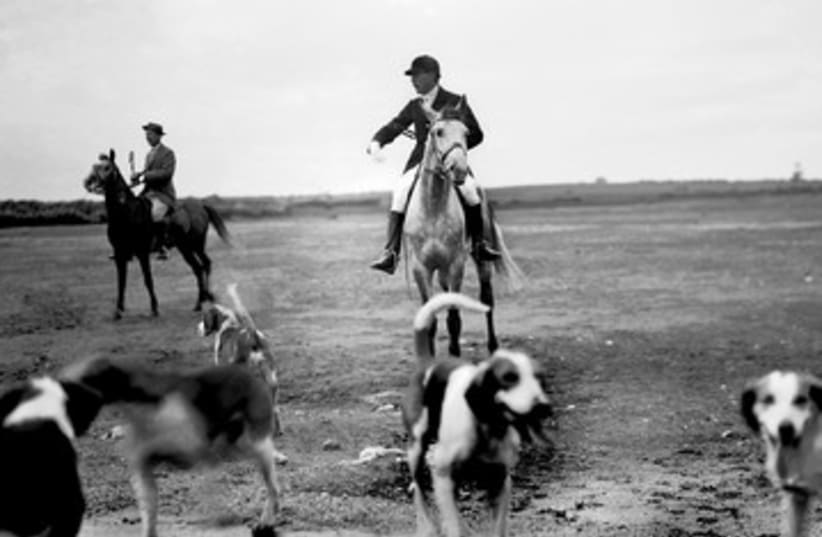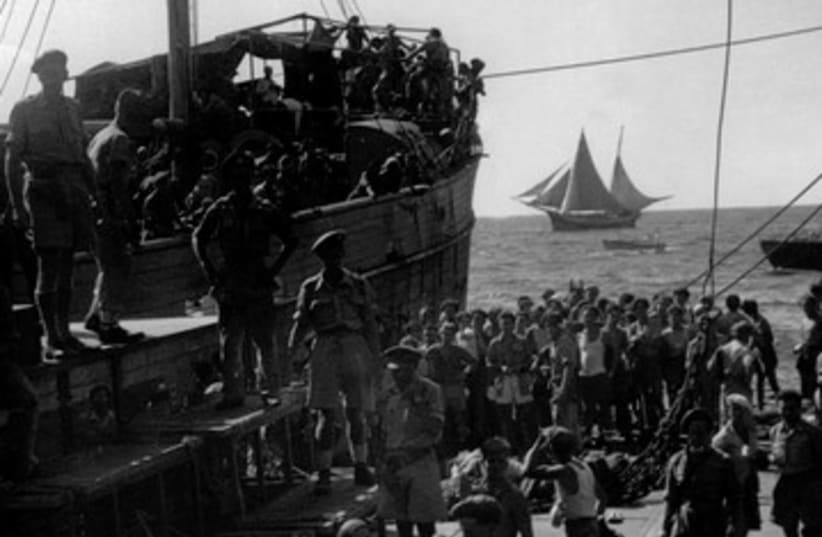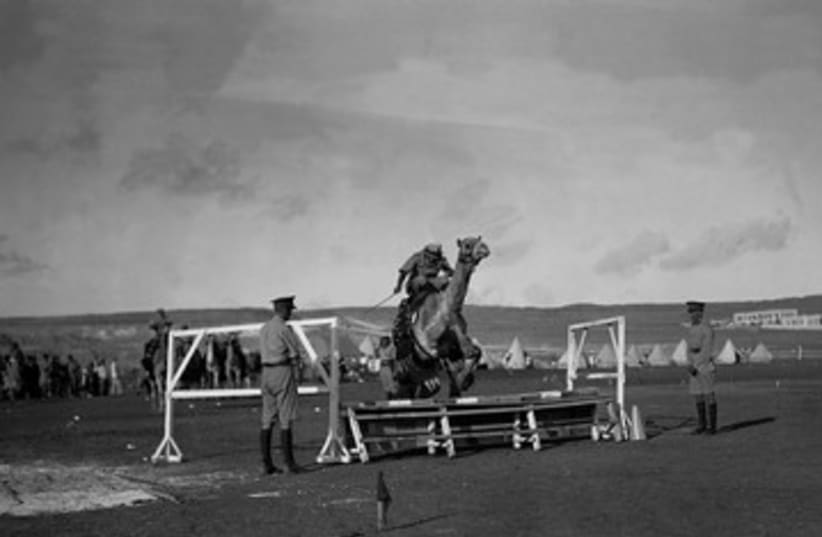




“Sometimes I feel that artists today are not fully aware of the past, of the past aesthetics and points of view of this place,” she complains.“I feel that their roots are not in the local culture. They are rooted in Western and foreign culture. I therefore feel that it’s very important to reveal past images and points of view, because these should be their foundations.”The “past images and points of view” that Ben-Tovim has decided to reveal in response comprise a very absorbing exhibition called “In the Service of the High Commissioner,” currently on view at the Eretz Israel Museum in Tel Aviv. The show presents around 70 photographs that document day-to-day life in this land during the period of British-ruled Mandatory Palestine, from the late 1920s up to the days immediately preceding the War of Independence, all taken by photojournalist Zvi Oron, better known as “Oroshkes.”Ben-Tovim, curator of the exhibition, developed her interest in history a few years back while working as the photography researcher on a project celebrating Tel Aviv’s centenary. She was immediately fascinated by the photographs and now says, “It was one of the best jobs I ever had.” It was also at this job that she first encountered the work of Oroshkes, a photographer who to her, appeared to have been unlike any of his contemporaries in Israel at the time. Ben-Tovim was intrigued by the fact that Oroshkes was somehow able to photograph the different sectors of Mandatory Palestine – capturing the images of the British, Jews, and Arabs with equal ease and intimacy – and that his artistic vision seems to have been free of the politics and ideologies that drove all of the other photographers working here at the time.“He was not Eastern European in his vision. He was not influenced by the politics and styles of the other photographers. He was more Western, more influenced by the US, where he had previously spent some time,” Ben-Tovim says. “His vision was more pluralistic and more humane. He didn’t refer to himself as an artist. He referred to himself as a journalist, and his work was a lot closer to the style of photojournalism that was prevalent in Depression-era 1930s United States – photographers like Walker Evans and Dorothea Lange.”So who was he? Zvi Oron (a name suggested many years later by prime minister Moshe Sharett) was born Hershel Oroshkes in 1888 in Bialystok, Poland. Provided with a traditional Jewish religious education, young Oroshkes was destined to become a rabbi. But like many of his generation, Oroshkes rebelled against a life of tradition and Orthodoxy and, following the death of his father and still in his teens, he left home and began to wander across Europe. He stayed for a while with his sister and brother-in-law, who was a professional photographer.He then developed an interest in journalism and a passionate concern for the bleak conditions and dangers confronting the Jews of Eastern Europe.After a brief sojourn in Germany, Oroshkes joined the great migration of Eastern European Jews to America, the “Goldene Medina.” Arriving in the US in 1913, he settled in Minneapolis, where he worked as a photographer by day and went to school at night. To his great disappointment, Oroshkes found American Jews to be largely apathetic about the plight of Jews in Russia and Poland, and his attempts to galvanize them into assisting those beleaguered communities were unsuccessful.Oroshkes had long been what was then called a “Jewish territorialist,” believing in the right of the Jews to a sovereign Jewish land, but not necessarily in Palestine. World War I and the Balfour Declaration made a Zionist of him, however, and in 1917 he responded to the call of future Israeli leaders David Ben-Gurion and Yitzhak Ben-Zvi to enlist in the Jewish Legion. Oroshkes joined the 39th Battalion of the Royal Fusiliers, composed mostly of American Jews. Upon his discharge in 1920, he bought photographic equipment in Alexandria, settled in Tel Aviv, and opened a photography studio.Three years later, Oroshkes approached the Jewish National Fund and offered his services as a photographer.He worked there only two years, however, apparently because his photographs did not conform to the prevailing style of “tower-and-stockade,” “making-thedesert- bloom” and Zionist cause-oriented photographs favored by the JNF. Oroshkes’s Western-influenced style of photojournalism, which was less about politics and ideology and much more personal and humanistic, was simply not what the JNF thought it needed at that point in time.“Eastern photography, which developed in Russia and Germany, was influenced by contemporary national movements,” says Ben-Tovim. “This type of photography placed ideology on center stage, and that’s the kind of photography that was wanted here in those days.Oroshkes’s Western-inspired attempts to achieve objectivity did not conform to the demands of the Zionist institutions for photography that was committed to the cause, so the JNF ceased using his pictures.SO WHAT did he do? He turned to another potential client, the British government of Mandatory Palestine.His knowledge of British culture and mentality, and the fact that he had served in the British army during the war helped him establish personal and professional ties with the British community.Oroshkes began by doing occasional photographic work for the government, until British high commissioner John Chancellor officially appointed him in 1929 as the provider of photographic services to the British government in Palestine. Oroshkes moved his studio to Jaffa Road in Jerusalem and began to take more than 60,000 photographs of virtually everything and everyone until the end of the Mandate in 1948.“As a former soldier in the British forces, I was able to become the official photographer of the British high commissioner and soon found the doors of the world press open,” he wrote in his memoirs. “I eventually represented some of the most important American and European newspapers. As a reporter I won the trust of the Mandate rulers, the Jews and the Arabs. The Jews accepted me because I told their truth, the British tolerated me because I represented influential newspapers, while my friendship with [Jordanian] King Abdullah won me the courtesy of all Arab leaders.”Says Ben-Tovim, “This is the main thing, the heart of his work. I think he was perhaps the only photographer that covered all of the societies that lived here. Because usually photographers were connected to only one of the societies – the Arabs, the Jews, or the British.Oroshkes managed to move freely between them and document them all.”This exhibition, “In the Service of the High Commissioner,” more than reflects this unique diversity of scope and subject. In these photographs we see the period of the British Mandate unfold before our eyes, from its beginnings in the 1920s, through its peak heady days of the 1930s, and into the darker days of increasing disorder and violence in the 1940s that led up to the Mandate’s end. We see British high society in the last golden years of empire, years of lavish garden parties, honor guards of magnificently arrayed marching soldiers, festive polo tournaments and, yes, even fox hunts – replete with properly attired horsemen riding with their hounds through open fields near Ramle.At the same time, we see Jews draining swamps and building roads, buying land from Arabs, and stoically standing around the dead body of Zionist leader Haim Arlosoroff, assassinated the day before while walking with his wife on a Tel Aviv beach. We see Jerusalem street scenes, including a riveting photograph of a Jewish beggar. And we see Arabs at a party at Government House, at Nebi Musa celebrations in Jerusalem and in villages throughout Mandatory Palestine. We see them being searched by soldiers at British army checkpoints, and we see them being forced by the British to fix railroad tracks that other Arabs sabotaged during their revolt.And finally, we see it all come to an end, with pictures of illegal Jewish immigrants taken off their boat and put aboard a British military ship for transport to detention camps in Cyprus in 1946, along with photographs of people standing amid the smoldering ruins of buildings on Mamilla Street in Jerusalem, after Arabs rioted and burned down the commercial district in 1947.Visitors to this exhibition find Oroshkes’s photographs interesting not for their presentation of images of a now distant era, but also for how much the events in those images seem to echo and resonate in our lives here today.“In the Service of the High Commissioner” is on display through June at the Eretz Israel Museum, 2 Haim Levanon Street, Tel Aviv. For information about opening hours and entrance fees call (03) 641-5244 or visit www.eretzmuseum.org.il.
